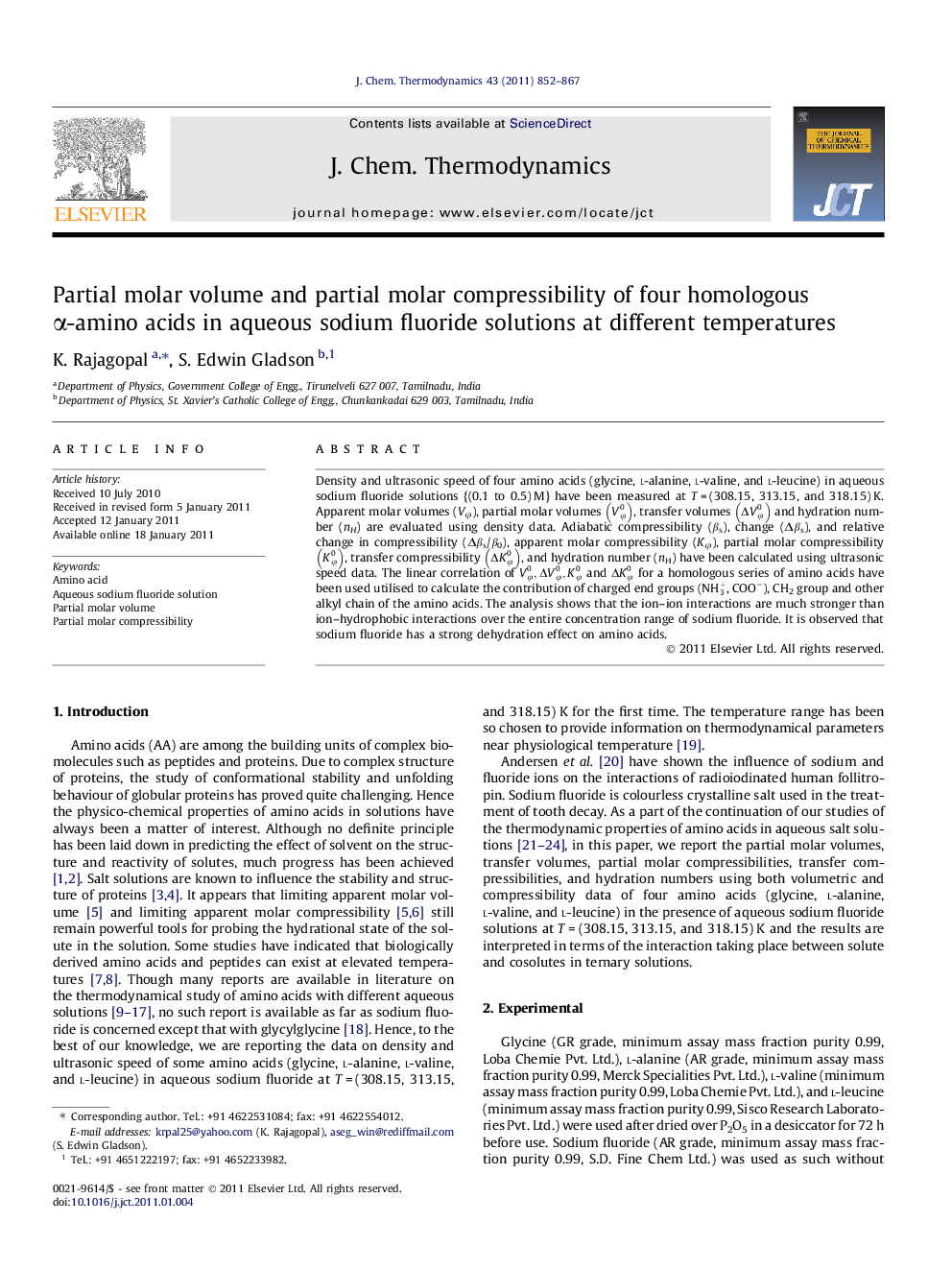| کد مقاله | کد نشریه | سال انتشار | مقاله انگلیسی | نسخه تمام متن |
|---|---|---|---|---|
| 216627 | 1426276 | 2011 | 16 صفحه PDF | دانلود رایگان |

Density and ultrasonic speed of four amino acids (glycine, l-alanine, l-valine, and l-leucine) in aqueous sodium fluoride solutions {(0.1 to 0.5) M} have been measured at T = (308.15, 313.15, and 318.15) K. Apparent molar volumes (Vφ ), partial molar volumes Vφ0, transfer volumes ΔVφ0 and hydration number (nH) are evaluated using density data. Adiabatic compressibility (βs), change (Δβs), and relative change in compressibility (Δβs/β0), apparent molar compressibility (Kφ ), partial molar compressibility Kφ0, transfer compressibility ΔKφ0, and hydration number (nH) have been calculated using ultrasonic speed data. The linear correlation of Vφ0,ΔVφ0,Kφ0 and ΔKφ0 for a homologous series of amino acids have been used utilised to calculate the contribution of charged end groups (NH3+, COO−), CH2 group and other alkyl chain of the amino acids. The analysis shows that the ion–ion interactions are much stronger than ion–hydrophobic interactions over the entire concentration range of sodium fluoride. It is observed that sodium fluoride has a strong dehydration effect on amino acids.
Research highlights
► Partial molar volume indicates strong solute-cosolute interaction in the NaF solution.
► Partial molar compressibility results compliment partial molar volume results.
► Hydration number proves that sodium fluoride has dehydration effect on amino acids.
► Interactions between sodium fluoride and (NH3+,COO-) group of amino acid are stronger.
Journal: The Journal of Chemical Thermodynamics - Volume 43, Issue 6, June 2011, Pages 852–867